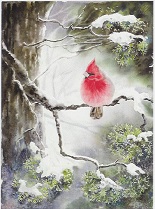Reiki With Animals
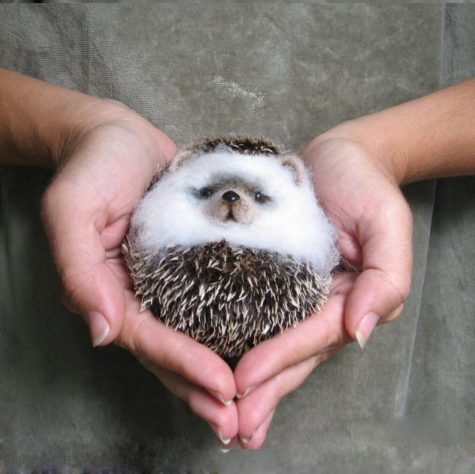
Contrary to popular belief, you do not need a special class in order to use the healing power of Reiki on animals. The techniques vary slightly only because the shapes of animals and their needs are just a little different. What follows are some basic guidelines to help get you started.
Cats
Cats deserve special mention. Cats respond very well to Reiki. They seem to know instantly what it is. Unlike almost any other animal, cats will position themselves precisely under your hands according to exactly where they need the help. Once they realize what you’re doing, their desire to cooperate is instantaneous and their acceptance of the healing is usually total.
When they’re done, they’re done. They’ll move away. And when they want more, they’ll come back. Cats tend to show a bit of attitude about energy work. It’s possible that they think they invented it!
Once in a great while, you will find a cat who believes that she or he is already so perfect that Reiki is non-essential to their well-being. When you work on another human, or animal, however that same cat will be right in the middle of the Reiki treatment soaking up the good energy. It has been an observation that the older the cat, the more they seem to appreciate Reiki.
Dogs
Dogs love Reiki. It works to calm hyperactive dogs and to help rehabilitate abused dogs. Reiki is also wonderful for healing and overall well-being. Dogs tend to return to you once they’ve gotten the idea that you will do the treatments on them. They aren’t nearly as “efficient” about it as cats, although occasionally a dog will also turn an area needing Reiki to your hands.
I generally use the technique of activating the Reiki and then just letting my hands go to the area they feel most drawn to, or to where it seems most comfortable for the dog. I had a little dog with bad knees, and every night I put my hands on whichever knee was closest to me, and sent Reiki until we both fell asleep.
If you want to work with animals, it is helpful to familiarize yourself with breed specific needs. For example, some breeds of dogs, the German Shepard for example, have a history of hip or knee problems, and these areas may require more energy and more time.
Fish
You can either place a “Reiki bubble” around the fish tank, or you can “beam” the fish. The Reiki will pass through anything. You can also place your hands on the aquarium glass. They will stay in the Reiki field for as long as they want the energy and then they’ll move. If you keep your hands in place, you’ll find they will come back, expecting the energy to be there.
Birds
Birds, unless they have been hand raised and are quite used to human contact, do not normally like the restraint of human hands. This can be very stressful for them. For this reason, it usually works best to enfold the bird in a “Reiki bubble” or beam the Reiki directly to them.
You can also place your hands on either side of the cage. They will stay in the Reiki energy for as long as it is comfortable, and then they’ll move.
I once healed a bird with Reiki energy. It crashed into a window at my home and when I ran out to see if it was OK, it was limp, and it’s little head was at a weird angle. I picked it up and immediately the Reiki began to flow. The energy was very intense and strong, and after about five minutes, the little bird stirred, and next thing you know, he seemed just fine. He looked around a little startled, and then flew away.
Small Animals
It is important to remember that most small animals do not enjoy being physically restrained. Make every effort to ensure that the animal is comfortable and feels safe. Small animals can be held loosely in your hands while you allow the Reiki energy to flow.
If they are squirmy or seem uncomfortable with being held, you can hold your hands an inch or two away from them, and send the Reiki that way. Alternatively, you can send the Reiki into their cage or enclosure using a “beam” or “bubble.”
Do not worry if it seems the Reiki flow doesn’t last as long as you would expect when working with a person. Sometimes it doesn’t take much time for a small animal to receive the full benefit of the Reiki energy.
Large Animals
Large animals can be treated by simply activating the Reiki and then allowing your hands to go to whatever areas of the body they are drawn to, or that seem comfortable for the animal.
Beaming the Reiki is also an option, especially if the animal does not seem to enjoy the actual hands on contact.
Reptiles and Other Animals
Any time you are asked or guided to give Reiki to an animal that doesn’t seem to enjoy actual physical contact, use a “beam” of Reiki, or a Reiki bubble. If the animal allows, or seems to enjoy being touched, activate the Reiki energy and then allow your intuition to guide you.
Other Options
Other options for healing animals include infusing their water and food with Reiki energy. Infusing the food with healing Reiki energy is done by holding the food bowl, or food container, and sending the Reiki energy into it with the intention of infusing the food with healing power. Infusing the water with Reiki is done the same way.
Don’t Forget!
Even if the need for Reiki comes up suddenly, and you are treating on the fly, always remember to center yourself first, and open your heart. If you are doing a “full Reiki” treatment, approach it with the same respect and care that you would for a human client or friend.
And remember, just as with humans, respect the animal’s choice. If they reject the Reiki, or try to get away, do not force it.
Also, it’s very important to smooth the aura and cut the ties when complete, just as you would when working with a person.
For my sources see: Recommended Reading
Balancing the Brain Hemispheres
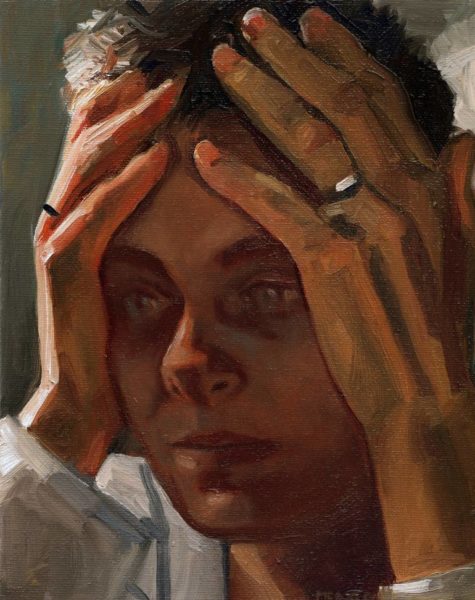
This grounding technique is called, balancing the brain hemispheres. Many of my clients and I practice this exercise because it is so relaxing.
Place both hands on the sides of your head so the palms are resting on the temples and the fingers cradle (wrap around) the crown of your head. The fingers from both hands will possibly touch at the top of the head. Hold firmly but not too tight.
Close your eyes and take several deep breaths. This is an opportunity to become aware of what your body needs regarding how many seconds it takes before you feel grounded and balanced.
Source: Balanced Woman’s Blog
A Simple Breathing Technique
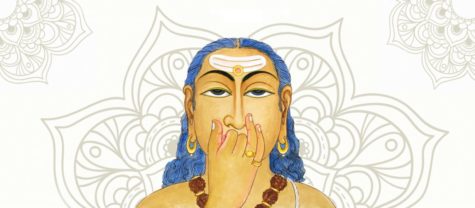
Here is a quick and simple breathing technique to help ground yourself, clear the mind and helps alleviate headaches. If you would like to, you can use calming, grounding statements as you breathe, as in the example shown below:
Inhaling (through left nostril, closing right nostril with right thumb), “I am breathing in calm” or “I am breathing in good energy.”
(Close left nostril with right ring finger) Exhaling (through right nostril), ”I am breathing out anxiety” or “I am breathing out bad energy ,” or “I am safe.”
Repeat rounds 6-10 times, focus on keeping breath smooth, deep and rhythmic. You will not want to practice this exercise if you have a cold.
It is not necessary to use affirmations with this exercise.
Source: Balanced Women’s Blog
Jyoshin Koki-ho
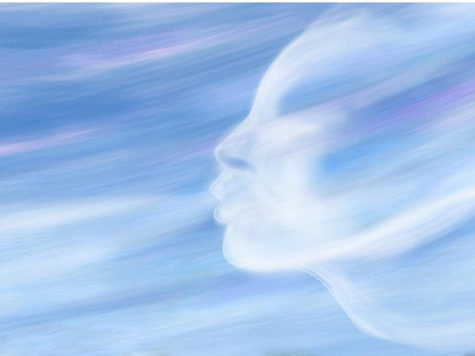
Jyoshin Koki-ho (Joshin Kokyo-ho) is a breathing technique. You breathe Reiki in through the nose through the crown and into the hara on the in breath. You breathe the out breath from the hara.
Jyoshin Kokiho is done to cleanse the spirit, heart and mind. It is a focus meditative breathing technique.
To do Jyoshin:
- Start by placing the hands in Gassho and your eyes closed.
- Breathe in through the nose and out through the mouth.
On the in breath, breathe in the light of Reiki through the crown and into the hara. Let the light fill your body completely transmuting all that is negative and stuck into light. On the out breath, breathe out that light and radiate it from you to all the universe.
For my sources see: Recommended Reading
The Kenyoku Technique
Also known as “dry bathing,” Kenyoku purifies body and soul. It strengthens your energy and helps you to detach from your clients, situations, thoughts, and emotions. It brings you into the present moment. It can be used before and after a Reiki session, and can also be used anytime you feel a need to release negative energy and/or nervous tension.
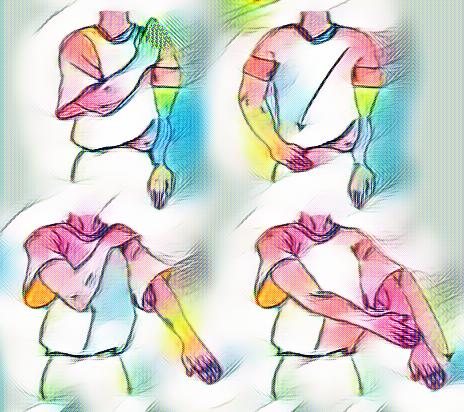
Kenyoku-ho is a technique to clear and strengthen the energy channels. The technique was common to many martial arts and chi kung schools such as JuJitsu, Aikidoand KiKo and was added by Usui.
Those familiar with the martial arts will recognize the two parts of this technique as common techniques. The first is a down block across the midsection (this technique is used in a variety of martial arts such as Karate, Kung Fu, Aikido, etc.). This down block is followed by what is commonly called in the martial arts as a “shirk” or technique to remove an opponents hand from your wrist that is done by sliding the knife edge of your hand down the arm.
Part One:
A. Place your right hand on the left shoulder so that the right fingertips are on the left shoulder. The hand is open, the fingers held together all point upwards. The hand (palm down) is against the body.
B. Slide the hand downward toward the right hip. Move the hand, going across the chest and ending up fingers down at the right hip. The hand (palm down) stays in light contact with the body the entire movement. (This is what is called an open handed down block in the martial arts.)
C. Repeat this process starting with the left hand on the right shoulder and going down to the left hip.
Part Two
D. Place the right hand again on the left shoulder. Slide the right hand down the left arm (inside or outside, each will cover different meridians) all the way to the fingertips. (This is what would be called a “shirk” in the martial arts, used to remove an opponents hand that is grabbing your arm.)
E. Repeat this with the left hand on the right arm.
F. Start with the right hand on the inside of the left elbow, and slide the hand down to the fingertips.
G. Repeat this with the left hand on the right inside of the elbow.
Note – Some masters teach the hand should slide to the inside of the arm and others teach it should slide down the outside of the arm. Different meridians are stimulated for each.
- The inside slide is yin and will effect the lung, heart, and kidney meridians.
- The outside slide is yang and will effect the triple warmer, colon and small intestine meridians.
It is interesting that this technique appears to have survived after a fashion in the Rand school that teaches to cut the cords on the solar plexus using a “karate chopping technique”
For my sources see: Recommended Reading
Nentatsu-ho
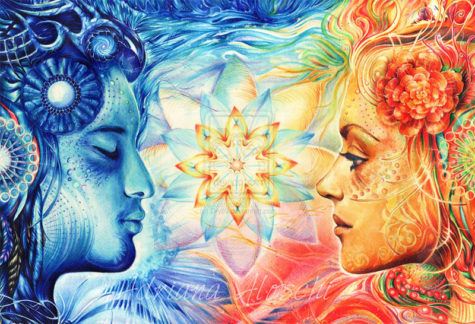
Nentatsu-ho is a Reiki method for sending a thought or wish, also called a “deprogramming” technique. The technique itself is thought to send a though or wish to yourself (higher self) or that of another with Reiki energy or vibrations.
The technique is simple to do and involves placing your hands another’s head (or your own) and confidently transmitting or sending the message with a pure mind and intent.
It is important to understand that this is not healing with mind power, but rather sending a message to the person’s sub consciousness with the Reiki energy.
Do not push, strain or try to hard as it can create tension for you and the other person. Like all reiki techniques, this is an effortless practice. It is done from a relaxed, meditative state of mind that is free of selfish intent.
This technique is still seen in the west in some attunement sets. It is common for the hands to be placed on the forehead and back of the head and to place an affirmation such as “you are perfectly attuned to the Reiki”, etc., when doing the attunement.
Nentatsu-ho can be used to share or transmit the five principles of Reiki, to remove bad habits, to reinforce good or positive alternate behaviors when treating bad habits, to reinforce functional or positive affirmations and many other possibilities.
If you are doing this for other people, make sure you understand clearly what the other person wants. Make sure you choose positive affirmations.
A. Connect to Reiki. One method is to hold your hands up high in the air to feel the Reiki energy and let its light flow into your whole being.
B. Bring the hands down and place one hand on the forehead (hairline) and the other on the back of the head. The affirmation “I am the Great Universe, Great Life Source and Great Reality” was taught to me to say at this point.
You can say, “you are healed, healthy, well” or any other affirmation that you choose. It is an aid to treatment and healing. The important part is to keep the intent clear, pure and confident.
C. Move the hand on the forehead to the back of the head by placing that hand on top/bottom of the other hand that is already on the back of the head and send the energy there for several minutes.
For my sources see: Recommended Reading
Dr. Usui’s Original Hand Positions
Usui Shiki Ryoho is the most common form of Reiki in the world. This was Reiki in the Hayashi-Takata line. The 12 positions that Takata taught (varies slightly from system to system) are the set that most practitioners know. You can find them here: Hand Positions ~ Healing Others.
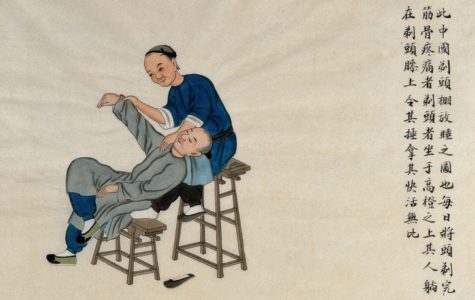
Hands on Healing is the common element to all versions of Reiki. In Japanese this is called “Te-ate” (pronounced “tay-ah-tay”). It would appear in Hayashi’s practices that he had several sets of hand positions at different points in the development of his interpretation of Reiki.
Hayashi Reiki Ryoho appears to have had 7 positions initially. It is a powerful set and follows the large intestine meridian in Traditional Chinese Medicine. It also appears that the set that Mrs. Takata taught was the one used for group treatment with several practitioners in Hayashi’s clinic.
It would appear that Usui either used Reiji and treated where indicated, or used a set of 5 hand positions and then used Reiji. Reiji is the ability of the Reiki practitioner to allow their hands to move or be drawn to the area of that body that needs healing.
Mrs. Takata also taught this technique of Reiji, teaching that we must notice the sensations in the hands and let them move. This happens as the hands become more sensitive with practice and as intuition develops. (Read how to do it here: Reiji-Ho and Chiryo.)
Reiji and Byosen Reikian-ho (focused healing method) were skills that were expected to be developed at Shoden (level I) before Okuden (level II) would be offered to the student.
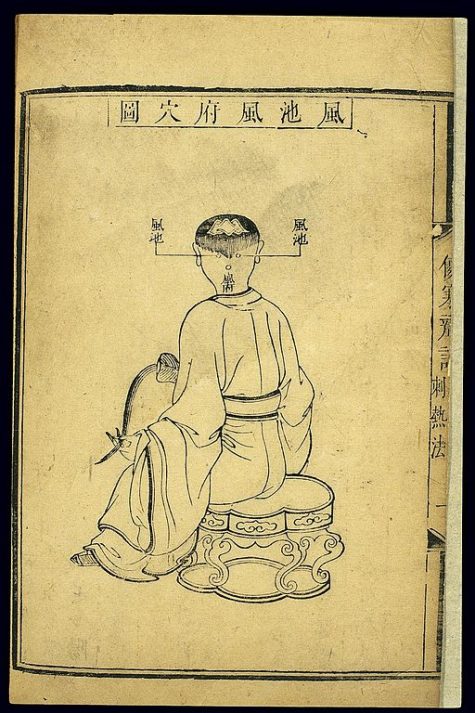
Usui’s five position set is based solidly on Traditional Chinese Medicine. The head and thorax are the 5 positions treated followed by Reiji. The body is considered to be the head and torso, and all major meridians pass through the head, thus by treating the head all areas of the body and mind are treated.
Here are the five positions:
Have the person sit. They are not laying down. These 5 positions were held for about 5 to 6 minutes each.
- 1. Zento-bu
This position is at the top forward part of the head. It is specifically at the hairline. You can use the technique of Nentatsu-ho to aid in the healing by using affirmations while you use this position.
- 2. Sokuto-bu
This is the standard hand position on the side of the head. The hands are on the sides of the head (i.e., one hand on either side).
- 3. Koutou-bu
This position is where both of the hands are placed on the upper part of the back of the head. This is the area between the base of the skull (bulb) and the top of the head.
- 4. Enzui-bu
In this position, both hands are placed on the bulb of the head. This area is the occiputal area commonly taught in Takata’s teaching.
- 5. Toucho-bu
In this position, both hands are placed on the top of the head.
After these 5 are performed for about 5 minutes each (or as needed) you follow this by performing Byosen Reikian ho (focused scanning healing technique) or Reiji. Using Byosen or Reiji guides you to know where to treat next for focused healing
For my sources see: Recommended Reading
Reiki Code of Ethics
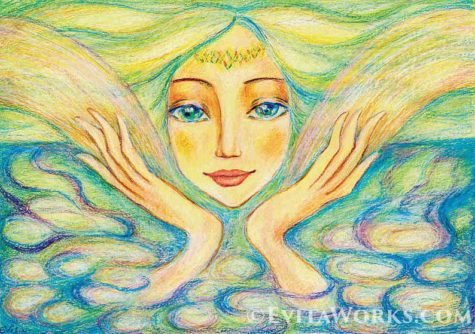
We respect an individual’s right to choose to be helped or not to be helped. This is called FREE WILL. We do not use Reiki on anyone who has not asked for it. We cannot know the soul’s purpose for that person or their higher self’s purpose. At some level conscious or subconsciously, they may not want to be helped.
There is a fine line between what is an invasion of privacy and what is not. If you feel a person needs the Reiki energy, but are not sure if that person would welcome or refuse the Reiki, you can send it via a “bubble” (see Exploring The Reiki Energy), and send it out through your High Self for the greatest good, with the clear intent that it be accepted by free will only. If the person refuses the energy, it can go instead to healing the Earth, or to someone else who wants and needs it. Unwanted Reiki energy may be recycled in this way for positive use, while still not violating another’s free will.
To force unwanted healing on anyone is totally against healer’s ethics. People and animals have the right to hold onto their dis-ease if they choose to do so.
You may set your own fee as far as “treatments” are concerned. You can do this on a donation basis as well. However, do not let the fee be a major factor in helping someone. You can trade out the treatment for something other than money. Value for value.
Remember the spiritual law: ” As you give, so shall you receive.” If you want abundance in your life, then give freely. There are times when you may only receive a hug ~ but how much is that hug worth? Your main concern is to help others whenever you can without harm to yourself.
Please remember that you cannot legally claim to be a healer. According to the rule of law, that would be “practicing medicine without a license.” Call yourself a Reiki Practitioner, Energy Facilitator, or whatever you feel is appropriate.
For my sources see: Recommended Reading
Feeling The Flow of Reiki
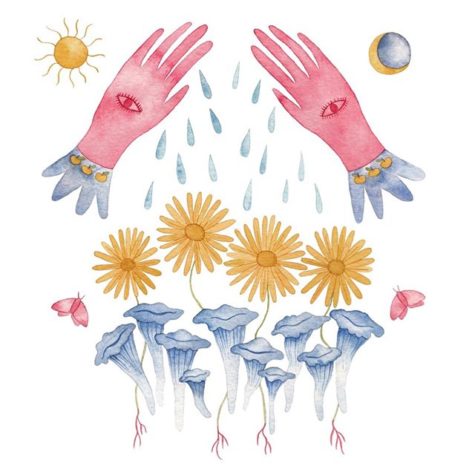
Once the energy begins, the healer or receiver usually notices heat sensation, and this is an identifying characteristic of Reiki. After receiving the Reiki 1 attunement and bringing the energy through for the first time in the classroom, hot hands happen in most healings. If what the person receiving the healing needs is cold, however, the healer’s hands will give cold.
Sometimes the healer feels that the hands are very hot, while the receiver of the energy feels coolness, and vice versa. Every healing position, and every healing session can be different.
When the hands are placed on a Reiki position, the healer generally feels a cycle of sensations. Initially, you might feel the warmth of body heat, but as the hands remain in place other feelings begin.
There may be sensations of heat, cold, water flowing, vibrating, trembling, magnetism, static electricity, tingling, color, sound, or (extremely rarely) pain moving through the healer’s hands. The healer may feel as if the hands have gone to sleep, with a pins-and-needles sensation.
The person receiving the healing may feel the same things or different ones, or maybe even nothing. The sensations change from position to position, and healing to healing. They are unpredictable, but there is almost always a sensation of some kind.
These continue for what at first seems like a long time, generally as long as five minutes. Then the sensations and quiet body warmth returns.
This completes the position, and signals the healer to move to the next one. As someone once said, “It goes up, and then it comes down, and then you can move.” I can’t think of a better way to describe what happens. If you don’t move, the cycle simply begins again: body warmth, several minutes of sensations, and body warmth again.
Often, a position takes less than the expected five minutes, and this is fine. Go by the feeling in your hands. Unless the receiver of the healing has back trouble, the positions on the back will probably take less time.
Occasionally, the sensations seem to go on forever, and the healer’s hands feel glued in place. Continue as long as you need to be there.
If your hands feel free to move and the sensations go on and on, however, stay a reasonable time and then move to the next position. More healing needs to be done here, but the pain or problem didn’t develop overnight and one session may not be enough to heal it. This is usually an area or position where much Reiki is needed, but since the full treatment session takes as long as an hour and a half, spending too much time in one place is not beneficial. Honor your intuition, and remember there is no right and wrong.
Generally speaking, the sensations are less distinct, or less intense, in self-healing than in healing others.
There are many different interpretations of the exact nature of the sensations, that cold means this thing and hot means something else entirely. In my experience, the sensations vary from person to person, session to session, need to need, and putting an arbitrary meaning on a particular feeling can be misleading.
It’s best to focus on allowing the energy to flow rather than on analyzing the feel of that flow. Too much thinking can pull you out of that intuitive heartfelt healing moment and put you into a space of judgment and analysis which may or may not be helpful.
For my sources see: Recommended Reading
Exploring The Hand Positions
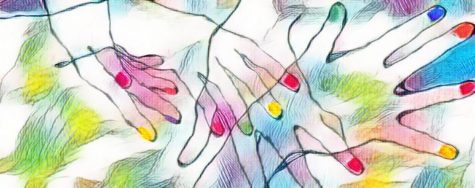
The following is based on the Chakra system, and gives guidelines as to what areas you might want to treat for specific issues.
Back of the Head:
- Physical: Improves coordination and receptivity, both in waking and sleeping.
- Emotional: Relaxes and decreases worry, fear, and irritations.
- Mental: Aids in retaining the memory of dreams.
- Spiritual: Increases the sense of “wholeness” and “oneness.”
Crown or Top of the Head:
- Physical: Opens your Crown Chakra. Aids headaches and hangovers. Balances the Pineal and Pituitary glands.
- Emotional: Reduces worry, depression, and hysteria. Produces calm and serenity.
- Mental: Improves memory, clarity, and creativity.
- Spiritual: Increases awareness and expands consciousness.
Eyes:
- Physical: Aids eyes, sinus, teeth, jaws, Pineal and Pituitary glands.
- Emotional: Relaxes and reduces stress and anxiety.
- Mental: Reduces confusion. Enhances Psychic abilities.
- Spiritual: Tunes you into your higher self and stimulates intuition.
Throat:
- Physical: Improves blood pressure. Aids with larynx and thyroid.
- Emotional: Removes anger, resentment, hostility, and negativity.
- Mental: Produces a sense of well being and contentment.
- Spiritual: Spiritual power of expression.
Heart:
- Physical: Aids heart, lungs, thymus, and immune system.
- Emotional: Increases ability to love and trust. Soothes nerves and removes stress.
- Mental: Refreshes and produces serenity. Aids in reasoning ability.
- Spiritual: Increases joy and unconditional love.
Solar Plexus:
- Physical: Pancreas, liver and solar plexus.
- Emotional: Produces strength, relaxation, self-control and confidence. Reduces stress and anxiety.
- Mental: Reduces mental confusion.
- Spiritual: Increases personal and spiritual power.
Sacral:
- Physical: Spleen. Reduces stress and aids in relaxation.
- Emotional: Produces silent confidence and reduces confusion.
- Mental: Inspires and awakens the mind.
- Spiritual: Provides inner strength.
Root:
- Physical: Intestines, prostate, bladder, and ovaries.
- Emotional: Restores mental health concerning sexual issues.
- Mental: Decreases rigid attitudes and thinking.
- Spiritual: Expands consciousness.
For my sources see: Recommended Reading
Related Posts
Of Interest
Cindy Plante: Gedoku-Ho
Gregory: Natural Power Spots
Alexander Boyd: The Seven Subtle Bodies
Alexander Boyd: The Seven Subtle Bodies
Alexander Boyd: The Seven Subtle Bodies

